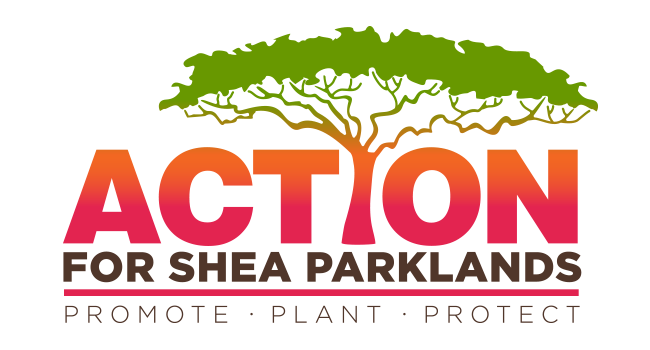About Action for Shea Parklands (ASP)

Nearly 2 billion shea trees grow naturally on parklands, dry savannahs and forests on a strip of about 5,000 km across 21 African countries, stretching from Senegal to South Sudan. These trees grow naturally and are integrated with crops on smallholder farms, creating an agroforestry landscape that acts like a carbon sink. At present, the shea value chain fixes 1.5 million tons of CO2 every year. Further, the parkland provides tree cover which contributes to higher water infiltration and reduced surface runoff, protecting against desertification and slowing forest degradation.
For producing communities, the shea tree provides a critical source of income and contributes to the livelihoods of 16 million women. At the household level, shea income represents up to 12% of the total income and up to 32% of the cash. Women collect and process shea fruits, kernels, and butter for personal consumption as well as trading purposes.
At the global level, shea’s functionality and alignment with natural and renewable consumer trends has made it a preferred ingredient in food and cosmetic products, driving increase in export by 600% over the last 20 years.
Why ASP?
Every year, an estimated 7,929,417 shea trees are lost across West Africa due to factors including climate change, lack of fallows, commercial agriculture, and tree removal.
If current trends continue, a projected shortage resulting in major interruption in the West African shea supply chain is anticipated by 2044. The realities of such predication will have major consequences on the income of millions of women collectors and processors as well as threaten industry sustainability and shea’s global competitiveness.
This trend also bears major climate consequences as the tree potential to avoid the release of CO2 in the atmosphere remains under-utilized. According to a recent study co-published by the Food and Agriculture Organization of the United Nations (FAO) and the GSA, increasing shea tree population by 7 million trees per year during 14 years would fix 9 million tons of CO2 every year.
As part of its Sustainability Program, the Global Shea Alliance (GSA) is mobilizing industry stakeholders across the globe to ACT NOW and PRESERVE shea parklands. The three pillars, “Promote, Plant, Protect,” are mutually reinforcing. The “Promote” and “Protect” aspects address long term and systemic factors behind the decrease in tree populations, while the “Plant” aspect showcases immediate change and impact. While shea is the primary focus of the initiative, industry stakeholders are encouraged to include other indigenous trees in their implementation of the three pillars to ensure diverse and productive parklands.
What is the Solution?
How Do You Participate?
Partners may support the initiative through the following ways:

Action for shea parkland is a Global Shea Alliance initiative integrated into its broader sustainability program aimed at protecting shea resources and empowering women collectors and processors.
Address
Global Shea Alliance Secretariat, 48 Mango Tree Avenue, Asylum Down, Accra
Digital Address: GA-028-99-43
info@globalshea.com
+233 540 121 067, +233 243 600 749
